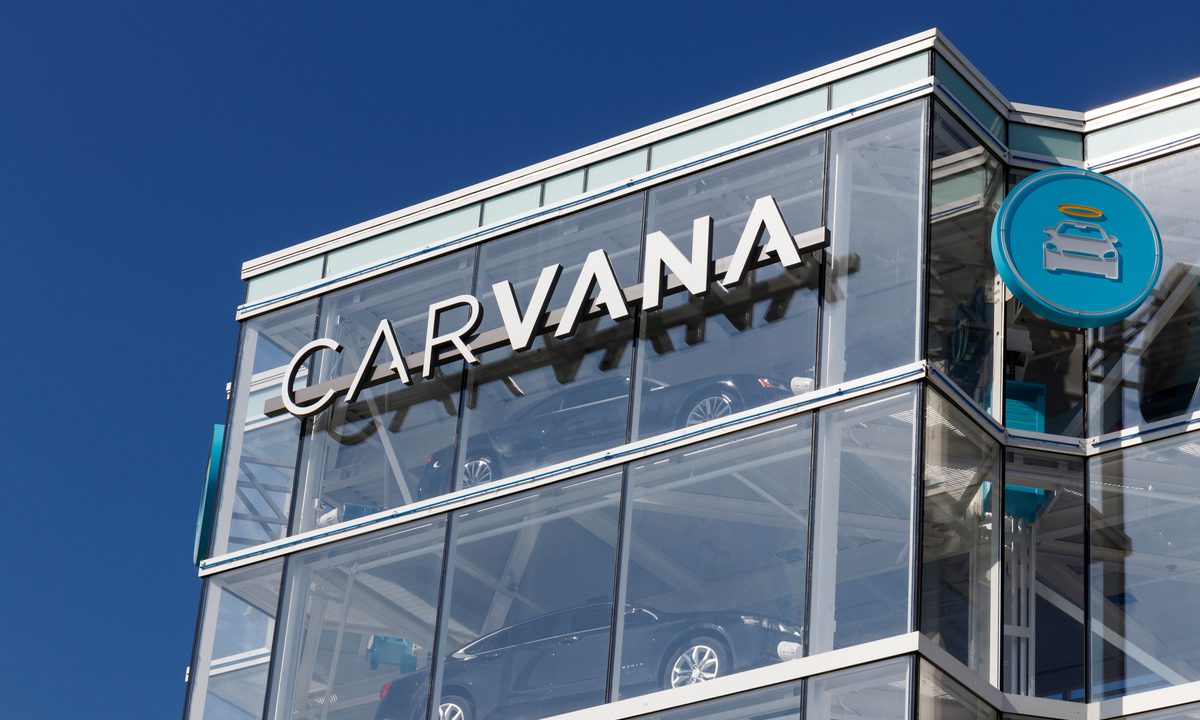
One day’s surge on Wall Street may be a blip, or it may be an omen.
Shares of Carvana rocketed up more than 16% Tuesday (May 30). By Wednesday morning (May 31), they were down about 4%. But year-to-date, they’ve rallied more than 180%.
There are any number of general reasons why the stock has seen a dramatic rebound. Investors may have been looking for beaten-up names to crowd into. (The stock lost more than 96% from its 2022 highs). And the company itself said earlier this month that it expects to return to profitability in this quarter after cutting costs.
Carvana said in its shareholder letter released May 4 that it improved its adjusted EBITDA in part by reducing its inventory.
Inventory has been a key concern for Carvana and its online brethren. eCommerce volumes through the first quarter, as seen by firms such as Vroom, were down double digits. In Vroom’s case, eCommerce units slid nearly 80% to 3,933. And along with that plummet, eCommerce revenues were down roughly the same amount. The company has been working through its aged inventory.
CarGurus’ earnings showed revenues down 46% year over year to $232 million; digital wholesale revenues down 76%; and total transactions at 17,500, down about 75% from the previous year. Inventory was down 55% year over year, according to management commentary, and down 20% in the first quarter.
Questions remain as to what happens over the next few months with the used vehicle market. Cox Automotive reported earlier this month that the inventory of used vehicles edged higher at the end of April compared to March. But supply remains below year-ago levels — down 16% to about 2.1 million units — which has helped keep average prices at around the $27,000 level, down a muted 4% from last year.
Interest rates — and specifically what the Federal Reserve does here — will help determine how consumers view the prospect of buying a vehicle (new or used) and whether they can afford to keep that set of wheels on the road. None of this is to say that the online car platforms are out of the woods yet. PYMNTS has noted that coming into 2023, as many as 64% of consumers said they were unlikely to purchase a car in 2023.
Yet, more recently, there has been a bit of recalibration of that intent, at least as noted in the most recent consumer confidence report.
“[P]lans to purchase autos and big-ticket appliances ticked up somewhat compared to April,” The Conference Board found.
At the same time, expectations for inflation have seemingly remained firmly entrenched at more than 6%, which is a threshold that has been expected in past readings of the Consumer Confidence Index. If consumers think inflation is here to stay at current levels, then the read-across may be that they should purchase a vehicle now before things possibly get worse and inventory maybe disappears, which would in turn drive prices higher.
Carvana’s road ahead — and the road ahead for its online peers — is less than clear. But for the time being, at least, Wall Street seems sanguine.